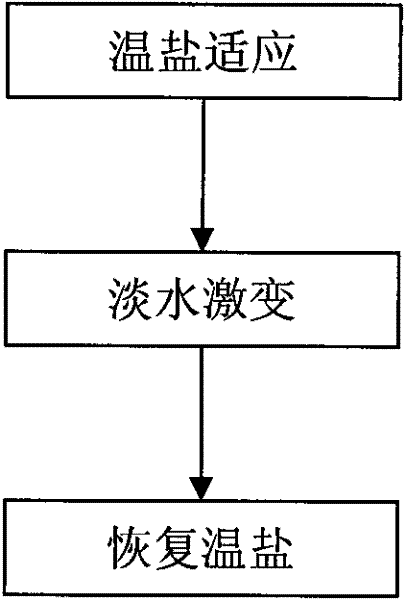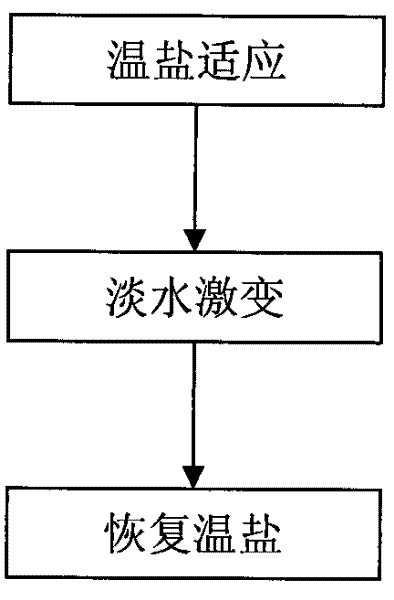Sterilization method for squid larva
A technology for larvae and cuttlefish, which is applied in the field of sterilization of squid larvae, can solve problems such as the death of living animals, and achieve low-cost effects
- Summary
- Abstract
- Description
- Claims
- Application Information
AI Technical Summary
Problems solved by technology
Method used
Image
Examples
Embodiment
[0017] Example: refer to figure 1 , squid larvae sterilization method, implementation process is as follows:
[0018] During the operation, the cuttlefish larvae were inflated continuously with an air pump, and the nutrient-enhanced Artemia nauplii were fed twice a day. The temperature of the water in the culture pond was 19°C and the salinity was 17‰. The culture area was set at the mouth of the Yangtze River. Mansoni's needleless squid breeding ground.
[0019] (1) temperature-salt adaptation: the cuttlefish larvae to be sterilized are moved into a sterilized container with a volume of 10 L, and then the water in the sterilized container is gradually raised to 30° C. of water temperature from the water temperature and salinity of the culture pond. The temperature rise adopts the heating method of hot rods, and the water temperature is controlled not to exceed 1°C per hour, so as to avoid the massive death of cuttlefish larvae due to excessive water temperature rise. When t...
PUM
 Login to View More
Login to View More Abstract
Description
Claims
Application Information
 Login to View More
Login to View More - R&D
- Intellectual Property
- Life Sciences
- Materials
- Tech Scout
- Unparalleled Data Quality
- Higher Quality Content
- 60% Fewer Hallucinations
Browse by: Latest US Patents, China's latest patents, Technical Efficacy Thesaurus, Application Domain, Technology Topic, Popular Technical Reports.
© 2025 PatSnap. All rights reserved.Legal|Privacy policy|Modern Slavery Act Transparency Statement|Sitemap|About US| Contact US: help@patsnap.com


